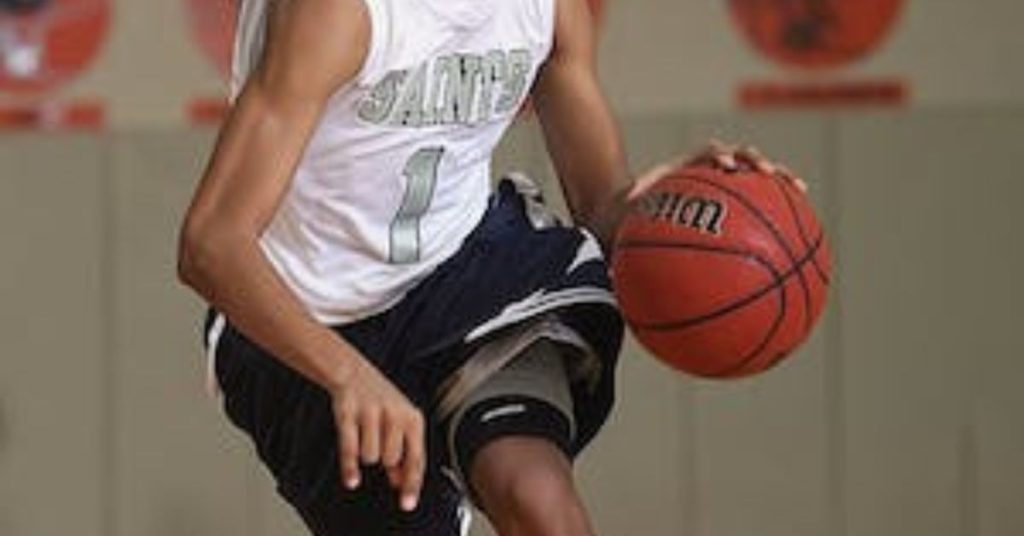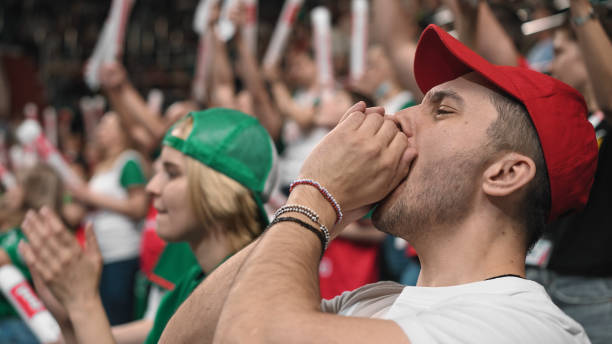If your elbow hurts from baseball, stop playing immediately and apply ice to the affected area. Consult a healthcare professional to assess the injury and get proper advice.
Baseball enthusiasts often embrace the thrill of the game, but the constant throwing can take a toll on the elbow, leading to pain or injury. As a sport that requires repetitive arm motions, players are prone to conditions such as tendonitis or more serious injuries like UCL (Ulnar Collateral Ligament) tears.
Early intervention is key to preventing further damage. Taking immediate action by pausing your game to address elbow pain is crucial for long-term athletic health. Ensuring a steady routine of icing, rest, and professional consultation at the first sign of pain safeguards against chronic issues and keeps you ready for the next pitch.
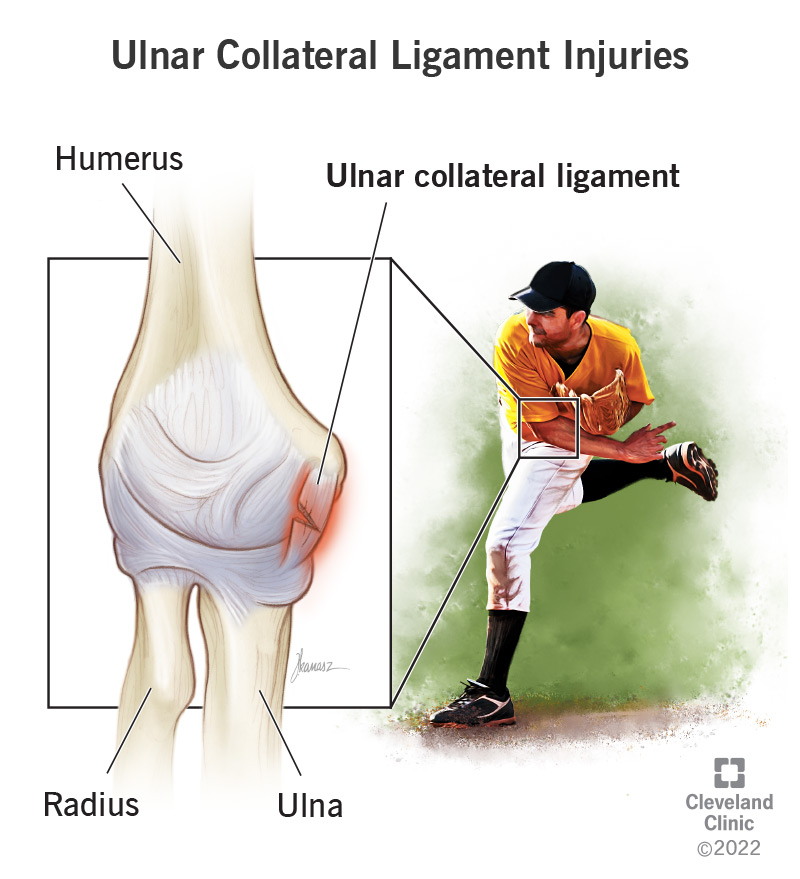
Credit: my.clevelandclinic.org
Recognizing The Signs Of Elbow Injury In Baseball
Baseball players know the drill – frequent throws can lead to elbow pain. But when does this pain hint at something more serious? Being aware of elbow injury signs is vital. Early detection means proper care and less downtime. Let’s break down how to spot trouble before it benches you for the season.
Identifying Common Symptoms
Elbow injuries leave clues. Pay attention to your body’s signals. Common signs include:
- Pain or tenderness, especially when gripping objects or during wrist movements
- Swelling or inflammation around the elbow joint
- A popping sensation during throwing
- Stiffness that makes stretching the arm difficult
- Weakness in the arm, leading to a drop in throwing performance
When To Seek Medical Attention
Wondering when to see a doctor? Here’s a quick guide:
| Symptom | Action |
|---|---|
| Mild discomfort with no swelling | Rest and monitor |
| Moderate pain or stiffness | Consult a coach or physiotherapist |
| Severe pain, swelling, or inability to move arm | Visit a doctor immediately |
Remember, resting is always better than risking further injury. If pain persists after a few days or worsens with activity, don’t wait. Get a professional opinion.
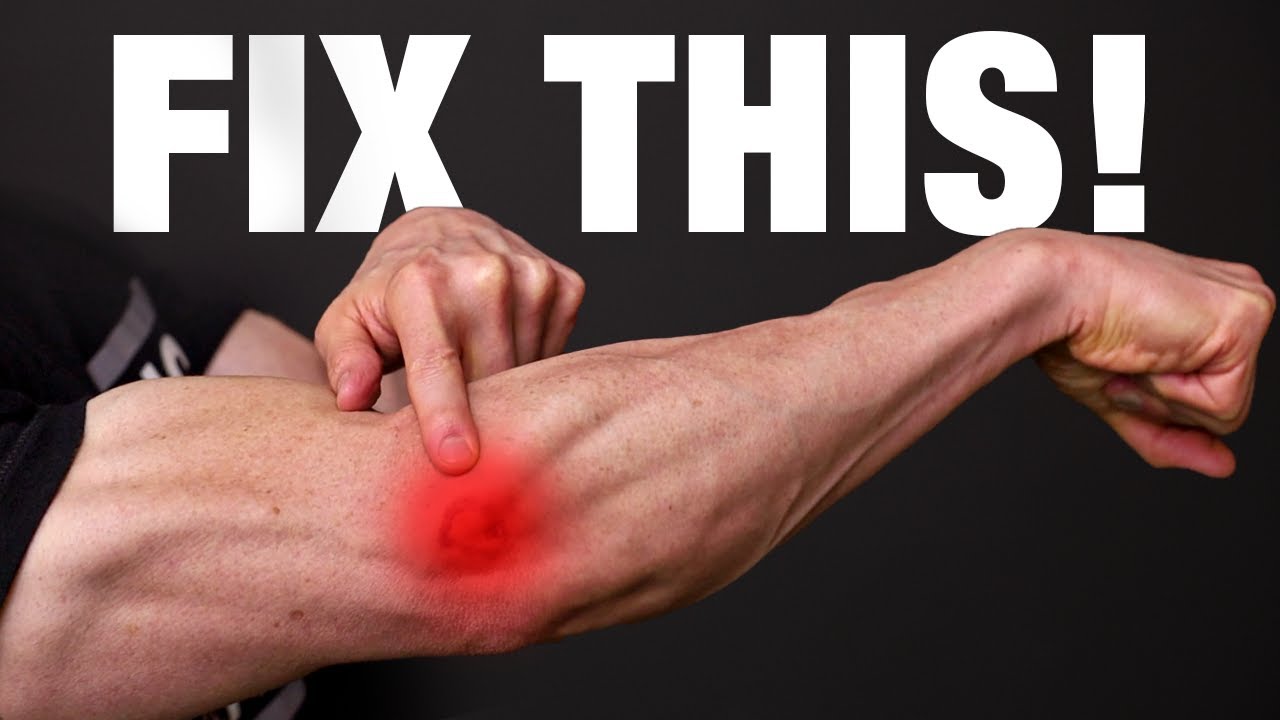
Credit: athleanx.com
Immediate Steps For Relieving Elbow Pain
Sharp pain in your elbow after baseball can be alarming. Quick action is critical. Ease the ache with effective, simple steps. This is the first-aid to comfort a sore elbow.
Resting The Afflicted Arm
Laying off from throwing is key. Stop any activity that hurts. Give your elbow a break. It helps the healing begin. Rest for at least a few days.
- Put your arm at ease.
- Avoid stressing the joint.
- Seek comfort positions.
Cold Therapy Application
Ice packs reduce inflammation. They soothe the pain. Cold therapy is your go-to right after injury. Wrap ice in a cloth. Apply for 15 minutes, then rest for 45. Repeat this for a few hours.
| Time | Action |
|---|---|
| 0 – 15 mins | Apply ice pack |
| 16 – 60 mins | Rest, no ice |
| Repeat | Follow the cycle |
Remember: Never put ice directly on the skin. It’s harmful. Use these initial care tips for elbow relief. They support the recovery journey.
The Rice Method Explained
Swing, hit, ouch! If you’re feeling sharp pain or dull aches in your elbow after baseball, it’s crucial to act fast. The RICE method is your best friend here—it stands for Rest, Ice, Compression, and Elevation. This care strategy can help heal minor injuries and reduce pain. Let’s break down how to use RICE to get you back in the game.
Rest For Recovery
Rest is your elbow’s ally. It means taking a break from the diamond and giving your arm a moment to breathe and repair. But how long should you rest? Aim for at least 48-72 hours after you first feel pain. This rest period could prevent more damage to your elbow.
Ice To Reduce Swelling
Applying ice is your next move. Follow the 20-minute rule—ice your elbow for 20 minutes, then remove for 20 minutes, repeating several times a day. Always wrap ice in a cloth to protect your skin.
Compression Techniques
Compression keeps swelling in check. Use an elastic bandage and wrap snugly—not too tight—around the affected elbow. Watch out for numbness or tingling; if you feel these, loosen the bandage a bit.
Elevation Benefits
Elevating your elbow higher than your heart works wonders. It reduces throbbing and swelling. When you lie down, put pillows under your arm to keep it lifted. Aim for several hours a day to see improvement.
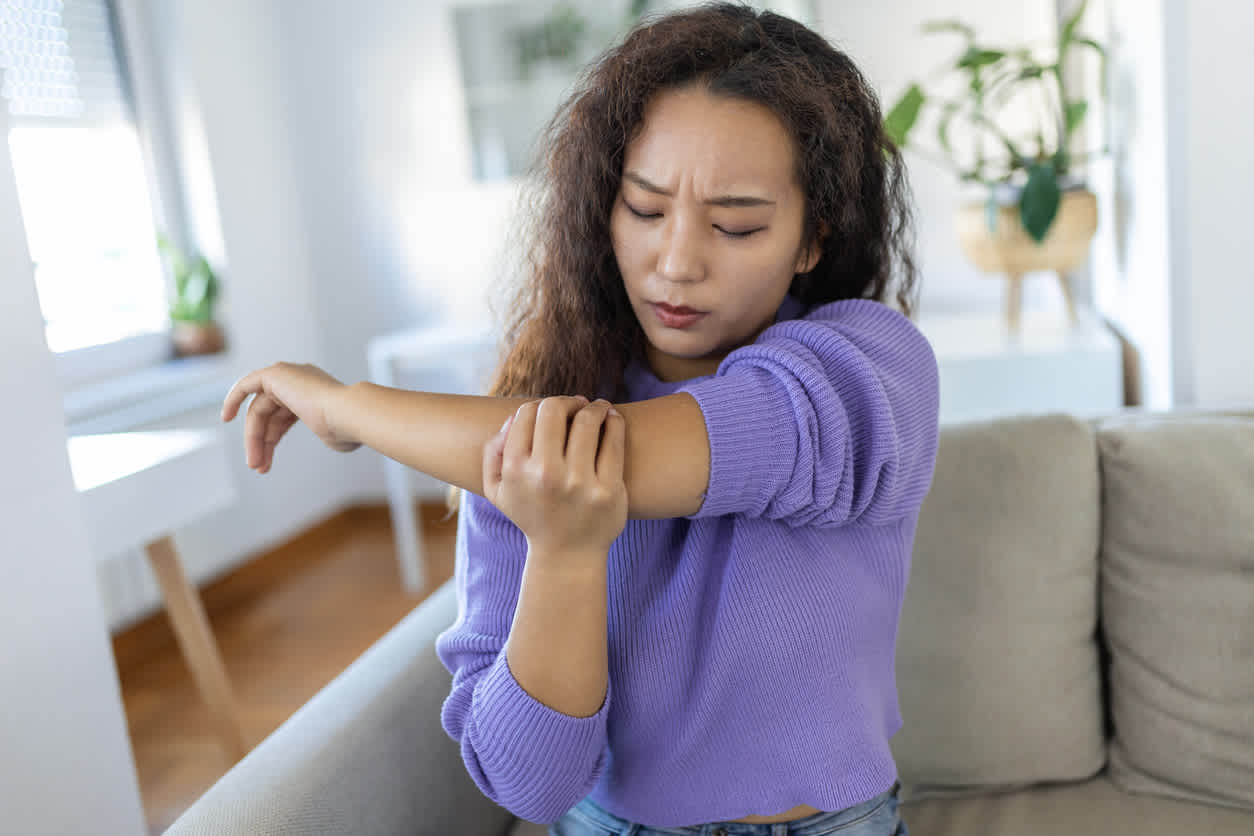
Credit: www.hingehealth.com
Medications And Supplements
Dealing with elbow pain from baseball can throw a curveball at your game and daily life. Relief might come from medications and supplements. Understanding your options helps manage pain and could speed up recovery.
Choosing Over-the-counter Pain Relief
Many athletes turn to over-the-counter (OTC) medications for quick pain relief. Nonsteroidal anti-inflammatory drugs (NSAIDs), like ibuprofen and naproxen, reduce inflammation and pain. Take them as directed on the label. Exceeding the recommended dosage could cause harm.
- Advil (Ibuprofen): Reduces inflammation, eases pain.
- Aleve (Naproxen): Longer-lasting relief, controls swelling.
- Tylenol (Acetaminophen): Helps with pain, but not inflammation.
| Medication | Use | Caution |
|---|---|---|
| Ibuprofen | Pain and inflammation | Don’t exceed dosage |
| Naproxen | Long-term relief | Good for swelling |
| Acetaminophen | Relieves pain | Not for inflammation |
Natural Supplements For Joint Health
Natural supplements might support joint health and complement OTC medications. They often lack side effects. Always talk to a doctor before starting any supplements.
- Omega-3 Fatty Acids: Found in fish oil, supports overall joint health.
- Glucosamine: Aids in cartilage repair and maintenance.
- Chondroitin: Often paired with glucosamine, improves joint mobility.
- MSM: An organic sulfur compound, reduces joint pain.
Combining the right OTC medications with supportive supplements can aid elbow recovery. This approach allows you to regain strength and return to baseball sooner.
Exercises And Stretching
Elbow pain from baseball is common, but not a game ender. The right exercises and stretches support healing. They promote strength and flexibility. It’s vital to focus on gentle movements. This avoids further injury. So, let’s dive into some beneficial routines for those sore elbows.
Gentle Workouts For Elbow Strength
Elbow strengthening doesn’t mean lifting heavy weights. Small, controlled movements are key. They build muscle without straining your joint. Try these workouts:
- Wrist Curls: Sit with your forearm on your thigh, palm up. Use a light dumbbell. Curl your wrist up and down.
- Reverse Wrist Curls: Same as wrist curls, but palm down. This works the opposite muscles.
- Elbow Flexion and Extension: Use a resistance band. Step on one end. Hold the other in your hand. Bend and straighten the elbow.
Stretches To Improve Flexibility
Stretching keeps the elbow joint limber. It speeds up your recovery and helps prevent future injuries. Here’s how to enhance flexibility:
- Arm Across Chest Stretch: Pull one arm across your chest. Hold it with the other hand. You’ll feel a stretch in the shoulder and back of the arm.
- Triceps Stretch: Reach one hand down the center of your back. Gently push the elbow with the other hand. This stretches the back of your upper arm.
- Wrist Flexor Stretch: Extend an arm with palm up. With the opposite hand, gently press the fingers down and back.
Preventative Measures For Players
As a baseball player, maintaining arm health is crucial. Elbow injuries can sideline players for weeks or even months. Taking preventative measures is key to staying in the game. In this section, we’ll cover essential strategies that help prevent painful elbow injuries from baseball.
Proper Throwing Mechanics
Mastering the correct way to throw is the first step in preventing elbow injuries. Incorrect throwing can strain the arm, leading to pain or worse. Consider these points:
- Elbow Position: Keep it at or above shoulder level when you throw.
- Follow-Through: Always allow your arm to follow through completely after releasing the ball.
- Use Your Body: Harness power from your legs and core to reduce strain on the arm.
- Consistent Practice: Regular, focused practice strengthens the proper muscle groups and enhances muscle memory.
Using Supportive Gear
Elbow support gear can help players avoid injury. Consider wearing:
- Compression Sleeves: These improve blood flow and support the elbow joint during games.
- Braces: Elbow braces offer extra stability for those who have experienced previous elbow injuries.
- Slides or Guards: They protect the elbow from impact during slides and dives.
Remember, using these preventative measures can go a long way in keeping baseball players healthy and on the field. Always consult with a coach or professional for personalized advice.
Understanding Elbow Conditioning
Elbow pain in baseball players is common yet often avoidable. Proper elbow conditioning is key to preventing injuries. Conditioning extends beyond just the muscles to include tendons and ligaments around the elbow. This section delves into strengthening and building endurance in these areas.
Strength Training Guidelines
Building a strong elbow for baseball starts with focused strength training. Elbow strength supports your throws and swings. Here are some best practices:
- Warm-up before lifting weights. This prepares the joints for stress.
- Start with lighter weights and gradually increase. Avoid overloading the elbow too quickly.
- Engage in exercises that target the forearm muscles. Grip strength has a direct impact on elbow health.
- Practice eccentric exercises. They help in muscle recuperation.
- Balance workouts between the flexor and extensor muscles. Keeping them equal reduces injury risks.
- Rest your elbow adequately between sessions. Overworking leads to injuries.
Endurance Building For Joint Health
Endurance is about how long your elbow can perform without getting hurt. To boost this, consider the following:
- Engage in regular cardiovascular activity. It boosts overall joint stamina.
- Include low-impact activities. Swimming is great for this purpose.
- Practice throwing mechanics. Proper form maintains joint endurance.
- Perform long-toss exercises. They help the elbow adapt to stress over time.
- Stay within recommended pitch counts. It controls the elbow’s workload.
Remember these conditioning practices not only keep the elbow strong but also prevent future injuries. Consistency and balance in your exercises help maintain optimal elbow health.
Long-term Healing And Rehabilitation
Elbow injuries from baseball are common but healing takes time. Patience is key for long-term recovery. Following a structured plan improves your chances of getting back to the game.
Developing A Recovery Plan
A solid recovery plan is a roadmap to wellness. The right approach can make a big difference. It should include:
- Rest periods to allow healing
- Physical therapy for strength and flexibility
- Gradual reintroduction to baseball activities
Contact a healthcare provider before you start. They can suggest the best plan. Always listen to your body. If it hurts, stop and rest.
Consulting With Sports Medicine Professionals
Working with experts is crucial. Sports medicine professionals understand your needs.
- Find a certified sports therapist.
- Go through an evaluation.
- Follow their guidance.
They use tests to check your elbow’s condition. Then, they create a tailored program. Always keep them updated on your progress.
Frequently Asked Questions Of What To Do If Your Elbow Hurts From Baseball
How Do You Treat Elbow Pain In Baseball?
Rest your elbow and avoid activities that aggravate the pain. Apply ice to reduce inflammation. Use compression bandages for support. Elevate the arm to decrease swelling. Consult a healthcare professional for proper diagnosis and treatment options, which may include physical therapy or medication.
How Long Does Baseball Elbow Last?
The duration of baseball elbow varies, typically healing within a few weeks to months. Rest and proper treatment can expedite recovery.
What Is The Fastest Way To Relieve Elbow Pain?
To quickly relieve elbow pain, apply ice, rest the joint, and use over-the-counter pain relievers. Consider using a brace and consulting a physician if pain persists.
Conclusion
Elbow pain shouldn’t sideline your baseball dreams. Address discomfort early with rest, proper technique, and medical consultation. Embrace prevention to keep playing your best game. Always prioritize health for long-term athletic success. Share this guide with teammates to foster a stronger, safer sports community.
Stay in the game, not on the bench.

Hello, I am Mark Hertz a full-time blogger and digital content creator. My passion and profession is blogging and sharing with this blog various ways to make money online from internet.

